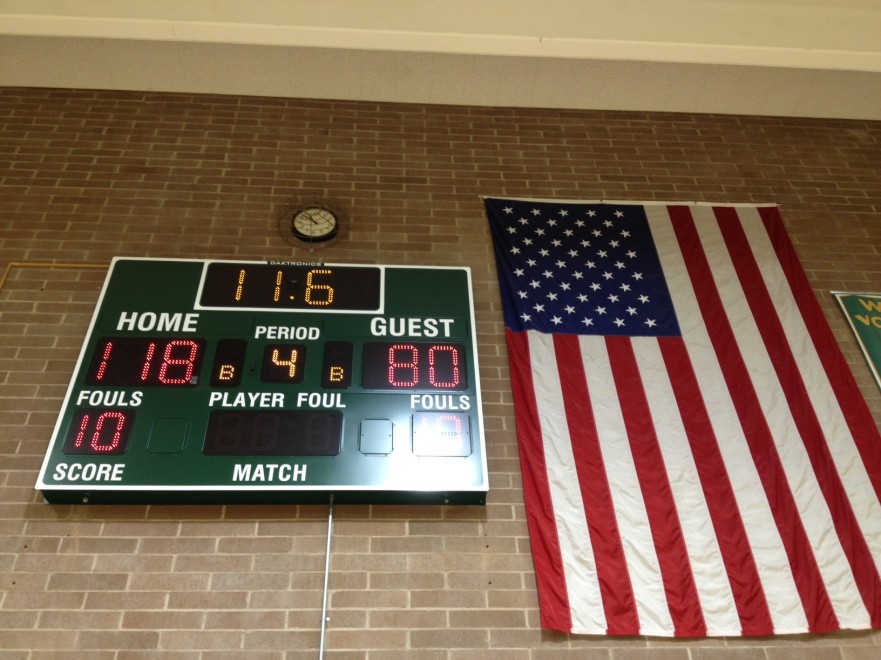Is this the end of the 3 sport athlete?
Recently I was at a track meet and got chance to sit down with the coaches from a rival school. Being at schools with similar demographics we share a lot in common. Similar kids, same school design, even the same logo and school colors. Can you guess where we all coach?
After we got done ripping on each other for who had better gear, we hung out and talked in depth about the newest rule that passed this year pertaining to high school athletics. Our bantering turned to seriousness as we discussed the effects of the new AIA legislation that will allow high school coaches to now hold practices year- round. In my piece this month, I want to highlight the pros and cons of this new rule and talk to you about its implications for high school sports.
When I was in high school as many of us remember, sports were seasonal. You played football in fall for example. In other words, you had an end date. Once it was over, you then headed to basketball season, then track, then summer. Repeat.
However, that model of high school athletics is no longer the norm. Long are the days where you did” lots” of sports. Today in order to be truly successful; kids, parents, and teams have moved to the year- round specialty model of athletics. As a coach, I have seen clubs forming for every sport sponsored by the AIA. There is even club shotput and discus now. Extremely specialized and highly organized.
So, what does this mean? It means that for basketball for instance it is nearly impossible to do 3 sports in a season because if you are that good, as soon as the season is over, you are heading to the spring club league where you are going to play and compete in another season with a club coach, who is usually sponsored by a shoe entity. The new reality is that college coaches no longer come to high school games to watch talent. They go to showcases, big tourneys, and combines because these events usually happen post season. As a college coach, you can see several kids in short amounts of time in one location vs traveling to several places spread out across the country.
But what about the kids? In my day, the mark of a true athletes was a varsity letter in 3 sports. That was the red badge of courage in 1995. The honor of wearing that huge school letter on front of your letter jacket was a symbol that you did something. You were a “Varsity Athlete. I still have my varsity letter jacket, though I will never fit into it again, it’s still one of my prized possessions.
Today sadly that culture no longer exists. In fact, if you were to ask some kids on my campus, only a few know what’s involved with “Letter Jackets”. Today the goal of getting a Varsity letter is not nearly as important as what club team you belong too. With the advent of club teams the last 15 years, we have seen kids ever increasingly becoming one sport athletes; Totally and completely focused on that one sport. So much so, that even the high school coaches are quickly becoming irrelevant to the club scene which promotes shoes, bling, and college scouts.
Advocates of the year- round practice rule would say that now because districts will not be beholden to the calendar on when they can and cannot practice, coaches at the high school level can have more control over their kids and what they are learning. In other words, this rule allows the high school coaches to practice in the off season in direct competition to the clubs. And in reality, it’s not like teams are not doing this already anyway. This rule will simply eliminate the paperwork, and unnecessarily difficult problem of keeping your team in tact through the off season so they learn what you want them to learn and not take lessons from someone else.
People who are against this new rule, would argue that we are seeing the death of the 3-sport athlete. Instead we are favoring the highly specialized and individualized model of athletics that puts undue stress and pressure on kids to perform. A fear that many have is that kids will no longer be able to engage in multiple sports for fear of losing their spots to kids who go year-round. Many would say that is simply survival of the fittest. Best player up.
My intention is not to take sides; however, I believe its important people understand that the fundamental way we conduct ourselves in high school athletics is changing. I think a conversation about what is best for kids needs to take place. Do we want an athletic system that promotes variety and different types of experiences for kids, or do we want specialization and razor focus in single sports? I grew up in a world where a Varsity Letter meant something. And to have multiple varsity letters was the mark of a true sportsman. It’s my hope that coaches who now have the leashes and restrictions removed, will allow students the opportunity to shine in a variety of sports and not force them into boxes of a single sport focus.










Comments 3
This is a very interesting post — thank you for bringing this issue to light. My high school experience was pretty similar to yours: the “true athletes,” or the students who were considered to have the most athletic ability, played a different sport each season.
The point you have made about the shifting towards the year-round model is incredibly relevant. My boyfriend’s younger sister, who I would consider to be a spectacular athlete, has also sacrificed participation in the other sports she enjoys (i.e. softball and basketball) to pursue volleyball throughout the entire school year AND summer. Her rationale behind doing this resonates well with the message of your blog post: in fear of being surpassed by those who also practice year-round during the school season.
Once again, great post!
This will be the death of the smaller sports. As a badminton coach I considered it a successful season if my girls tried and learned a new sport, found some success and confidence, and used that to try another sport in a later season. Why would they come out for an overlooked sport like badminton when they could practice soccer, track or softball year-round?
Thanks for sharing your experience with high school sports. I too have seen the rise of club sports, and the hyper focus on one sport over another. I wonder if students find the hyper focus as a determent or a way to ensure success. Thanks for brining this to light.